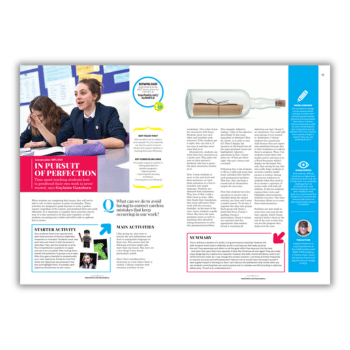MFL speaking and listening – How to respond to reticence

If you’re struggling to develop students’ confidence in their speaking and listening skills, a fresh approach may be in order, suggests Steve Smith…

- by Steve Smith

One of the main challenges facing MFL teachers is the reluctance exhibited by many KS3 pupils to engage with communicating in a new language.
This is partly explained by the prevalent attitudes to other languages and cultures we see in some communities, as well as the dominance of English as a world language.
But a growing number of MFL departments around England have managed to overcome pupils’ reticence and improve their attitudes, confidence and skills by experimenting with some innovative teaching methods.
Comprehensible input
These include the use of sentence builder tables and knowledge organisers (or a combination of both) to develop confidence in listening and speaking from the earliest stages of learning.
Following many years in which appearances of English were discouraged in MFL lessons, both tools make a virtue of showing pupils English translations in order to make their learning more meaningful.
One of the fundamentals of language learning is that we need to understand messages in order for the brain to process new language. Put another way, comprehensible input is the bedrock of second language acquisition.
When a different language is presented to us in phrases or full sentences alongside an English translation, there are no barriers to understanding. Pupils aren’t limited to responding with just single words or short phrases – a frustrating experience for those learners who want to speak in sentences.
So, what should a typical MFL lesson look like?
Noisy but productive
A printed or displayed resource can serve as the basis for tasks such as whole class repetition, paired reading, translation and comprehension.
The stress will initially be on language input, with compositional writing emerging later in the sequence once pupils have recycled the target language on numerous occasions over a number of lessons. The lessons themselves may be quite teacher-led, or feature a good deal of paired practice.
Trending
MFL lessons can generally end up being noisy, but highly productive, with lots of listening and speaking. A rigorous focus on accurate pronunciation builds phonics skills, which will in turn help to produce more confident speakers and effective listeners.
When pupils are speaking and listening a great deal, there may be a relative dearth of written evidence to show observers, particularly in the first year.
It’s therefore incumbent upon MFL teachers to explain that their methodology is underpinned by second language acquisition theory and cognitive science – notably, the importance of comprehensible input, phonological working memory, phonics awareness and chunking language repeatedly to maximise the efficient use of working memory.
Firm foundations
Could reading aloud and translation of chunked language come at the expense of more meaningful, spontaneous com unication? On the contrary, the evidence suggests that early development of phonological, phonics and pronunciation skills provides a firm foundation on which to develop more creative uses of language.
Allowing pupils to frequently work with phrases and full sentences – as opposed to single words put together according to grammatical rules – more closely reflects how we pick up our first languages, while also giving pupils the means to work confidently with a repertoire of useful language.
Evidence from many happy classrooms suggests that revised schemes of work and new methodology have been making a real mark.
Steve Smith is an experienced teacher educator and author; for more information, visit frenchteachernet.blogspot.com or follow @spsmith45. Browse our resources for European Day Of Languages.










